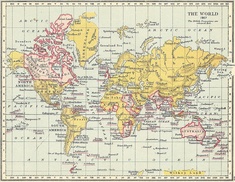
Every Major Colony of the British Empire Explained (P2)
First published: Tuesday February 8th, 2022
Report this blog
Introduction
Greetings, again everyone to the new short series I have just recently created, where I attempt to name every major possession that the British once had in control while also explaining a fair amount of each one.
Now, looking back at the first part of this series, (If you haven't yet checked it out, then I do recommend reading that before you come to here), we went through many of the most notable British colonies such as British India, The Thirteen Colonies and Egypt, as well as some lesser-known ones as well, which I will probably cover more in this part with one or two notable ones as well. Anyway, I think that will be enough explaining so let's get into it now!
Canada
Starting with a more well-known British colony, we come to Canada. This colony has a very interesting past as a part of the British Empire and is very unlike many other colonies and their struggle for independence. The first British permanent settlements as colonies in modern-day Canadian land date back to the 1763, after the empire defeated the French and its allies in the famous Seven Years War, gaining many new colonies from France like territories in India, America and including a very significant chunk of Canada. This had marked the beginning of another major British colony in North America, along with the Thirteen Colonies for a brief amount of time.
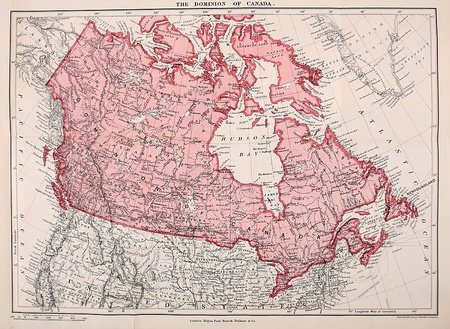
Overtime, Canada's significance as a British colony, especially after the American Revolution, which saw the Thirteen Colonies break away from the British Empire, making Canada the most important and largest British foothold in all of the Americas. Not only this but very quickly, the British began to explore more and more of the sparsely inhabited and inhospitable parts of northern and central Canada until the country's modern-day international borders began to take shape during the mid-1800s.
Not long after this, in 1867, very nearly one hundred years since its establishment, Canada was finally granted a certain level of independence, changing its status from a British colony in the empire, to a Dominion, meaning that it could govern itself mostly, but its foreign policies and affairs were still controlled by ministers back in the United Kingdom. By the beginning of the 20th century, Canada had started to thrive as a Dominion, still remaining loyal to Britain without any rebellion for full independence. Furthermore, this also cemented in during both World Wars, most notably in the second, in which Canadian soldiers sent to Europe to defend their allies and fight alongside Americans and British troops. In this, the country played an incredibly vital role in many Allied victories like the D-Day landings, the Battle of the Atlantic and the Race for Berlin. Finally, after another hundred years of being a British Dominion, Canada was finally granted full independence in 1982. Still to this day, though, the country remains one of the closest allies of the United Kingdom and also has over two hundred years of British rule preserved deeply into its culture and language, with even the Queen staying as the Head of State of Canada.
Gibraltar
One fairly well-known colony the British had in possession, and actually still does today, is Gibraltar. Located on a peninsula on the tip of the Iberian Peninsula, the small rock was first obtained by the British during the War of the Spanish Succession, after it was captured by joint British and Dutch armies. In the treaty following the war, in 1713, Gibraltar was handed over from the Spanish to the empire, marking the beginning of the peninsula's long history with the British.
Although it had a puny size, Gibraltar was a vital place for the British as it offered them access to the Mediterranean and was a great place to make a military base. During the Second World War, it's existence as a British colony was largely threatened after the peninsula's massive and slowly-industrializing neighbour, Spain, had become a Fascist power, and was also in reach of Fascist Italy and German-Occupied France. Despite this, Gibraltar stayed under the control of Britain until the end of the war. To this day the now-Overseas Territory still remains safely under the hands of the UK.

Zanzibar
Coming back to Africa, another small but interesting possession the British held was the island of Zanzibar, which was first claimed by the empire in 1890, after interacting with its Sultans and helping to abolish the slave trade on the island. By using its relations Zanzibar's ruler at the time, the British were able to control the island without a war or rebellion from the inhabitants, turning it into a Protectorate.
Throughout the 70-year long British rule of the island, very few rebellions took place, but most notably was the Anglo-Zanzibar War that took place in 1896 and saw former Slave masters and owners briefly take control of the island and declare it as an independent country. This was actually one of the most one-sided conflicts, with the largest and most powerful empire in the world, going against a group of 200 normal citizens. This was also the shortest war ever, lasting just 38 minutes. Despite this, Zanzibar was eventually granted independence by the British in 1963 and not long after, in 1964, it was merged with another former British colony named Tanganyika, forming the new country, Tanzania, we all know today.
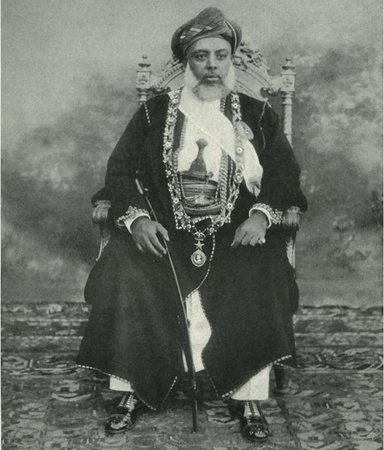
Sudan
Continuing in Africa, one other major colony the British had was Sudan, in North Africa. The first traces of British settlements in this colony date back to 1899, after recently bringing neighbouring Egypt, which Sudan was in a union with, under its sphere of influence. After this, British and Egyptian forces began to move into Sudan effectively creating a joint control over the country. Despite this, it was the British that actually had most of the influence in the area, mainly due to the fact that Egypt had been recently turned into a British Protectorate, further reducing its say in Sudan. After just over half a century of British rule in the region, after agreement between the UK and Egypt in 1953, Sudan was finally granted independence in 1956, not only marking the end of another British colony, but also the 136-year union between Egypt and Sudan.
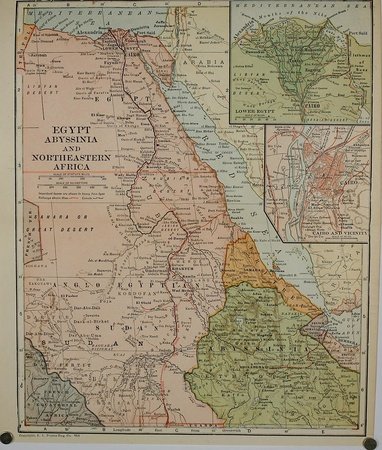
Hong Kong
One very famous colony that the British held in far east Asia was Hong Kong. Like many other possessions the British had in control, this one was first obtained into their hands via a war and this time, The First Opium War against China, in 1841, after British soldiers occupying the area during it. Following the end of the war one year later, Hong Kong was ceded from China to the United Kingdom in 1842, administering it as a Crown Colony. In 1898, Hong Kong's territory was further extended by a significant amount, marking the beginning of the 99-year lease that the British Empire had on the islands before having to hand it back over. As time passed, Hong Kong, began to thrive under British rule, with more major settlements growing and being established very quickly. However, during the middle of the Second World War, in 1941, the islands faced the worst and were swiftly occupied by advancing Japanese-Axis forces. For just over three whole years, Hong Kong remained under the control of the Fascist powers, until in 1945, after the fall of the Empire of Japan, when the region was re-controlled by the British. For another 52 years, Hong Kong remained under British control and a Capitalist-Free Market Economy. Eventually, in 1997, just before the dawn of the 21st century, Hong Kong was handed back over to China, following the expiration of the lease the British had from 1898. This had marked not just the end of another British colony, but the official end of the British Empire as this was its last major colony in the world.

South Africa
Next, we come to another interesting and fairly well-known British colony in Africa, South Africa. Similar to Hong Kong, the first traces of British control in this colony dates back to 1795, when British troops briefly occupied the city of Cape Town, to prevent it from being captured by enemy forces during the Napoleonic Wars, until 1803, when it was shortly returned to the Netherlands. However, soon after, the British returned to it in 1806, and this time, it was allowed to annex it during the treaty that ended the war, officially making it a part of the British Empire.
Gradually, after 1806, British settlers from the UK and different parts of the empire and began to settle in many parts of the new colonies in Southern Africa, which was also rapidly growing in size. After the defeat of some powerful tribes such as the Boer Republics and the Zulu people, following the aftermath of many wars, British South Africa had eventually grown to the borders we are now familiar with today. In 1910, the many colonies making up British South Africa was granted a limited independence, becoming a British Dominion.
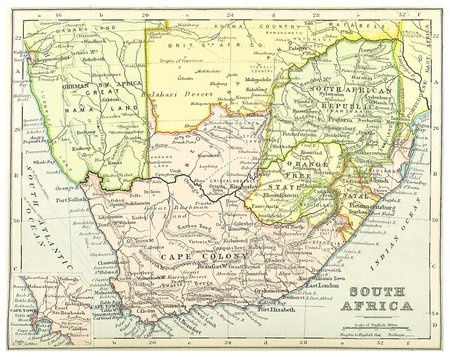
Despite this, during the First World War, South Africa remained very loyal to the British Empire, even sending some troops from the country to fight in the trenches in Europe with Allied powers. Even after gaining full independence from the United Kingdom and becoming a sovereign nation in 1931, the country still played a vital role in World War Two from 1939 to 1945 by defending the British Isles and fighting alongside British troops once more. Today, South Africa is one of the very few former-British colonies in the world that still have signs of British culture in its borders and remain very close allies with the UK.
Trucial States
Coming to the Middle East now, one not as famous British possession was named the Trucial States, which was made up of many emirates, or kingdoms, ruled by different leaders that controlled the region beforehand. The first British traces in the area date all the way back to the early 19th century, in 1820, after the signing of a series of treaties that saw the different kingdoms permanently align themselves with Britain, in return for the empire offering protection from foreign powers for the kingdoms, but they were not quite Protectorates yet. Originally, for the rest of the 1800s, these kingdoms, collectively known by the British as the Trucial States, were simply counted as just colonial subdivisions of the British Raj, called "Persian Gulf Residencies", until more than one hundred years later in 1947, when they were made official British Protectorates. During the de-colonization period, the British Empire also let go of the Trucial States, but not by matters of war, a you may expect, but just diplomatically and stages of partial independence, such as the creation of the Trucial States Council a few decades previously in 1952. Finally, on the 1st of December, 1971, the Protectorate of the Trucial States ended after British troops peacefully withdrew from the region, creating the newly formed United Arab Emirates as we all know today.
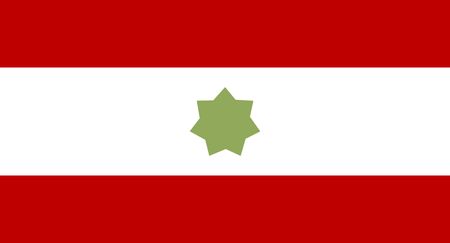
British Gold Coast
The last British colony, of part two, we come to talk about is none other than the British Gold Coast, or Ghana as you may call it, located on the west coast of Africa, just off the coast of the Gulf of Guinea. Starting off with explaining its name, the row of colonies on the coast of modern-day Ghana first came to being after many trading outposts had been set up by European colonizers, that mostly exported gold from the African continent. Eventually, after many other European powers had controlled the region at different points of time for over two hundred years, the area had fallen into the hands of the British in 1821, which would be the Gold Coast's final but most significant foreign power. Like many other colonies, after gaining control of the coastline, the British began to work their way inland, which meant some more wars with native tribes how surprising. After just over one hundred years of British rule in the Gold Coast, it was finally granted independence in 1957, ending another vital British colony, but also giving birth to the newly formed, Ghana.
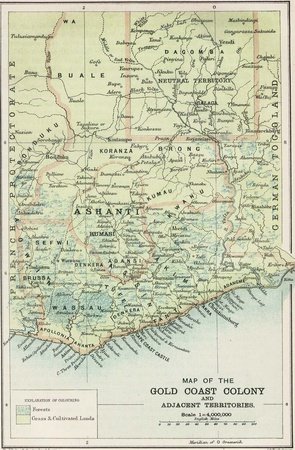
Conclusion
In conclusion to the second part of this estimated three-part series, I hope you enjoyed reading this, as I really enjoyed making this as well. The next part will most likely be the last and final of the series but depending on what I think when I start writing the actual blog, I will decide if it will or not.
Speaking of the next part, it will probably be out by the end of next week most likely in the weekend but I do apologise if it releases slightly later than that. Anyway, that's all I have to say for now so I would like to thank you all so much for reading and goodbye! :)

shows I don’t pay attention to the Modern-Day Countries on a Map quizzesI personally think that Egypt and Sudan are the same colony. I mean, they are both straddling the Nile and they are in the same general area.
Cuotak: Who dare to invoke us!?
Again, an amazing blog